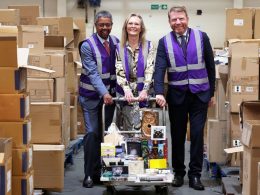HM Treasury, the government department directing economic policy, has splashed nearly £10 million on remote working devices to fast-track work-from-home policies since the pandemic.
The data, retrieved via a Freedom of Information (FOI) request and analysed by the Parliament Street think tank, observed the number of laptops, tablets and phones purchased by HM Treasury each year since 2018.
In total, the department spent £9,331,405 during the period in order to cope with the onset of remote working, with a third of the spending coming between May 2021 and April 2022 at £3,183,454 as lockdown restrictions eased.
Laptops accounted for the highest proportion at £6,724,631 for 5,826 devices, representing 72 per cent of the spend, £2,517,165 of which came during the May 2021 to April 2022 period to get staff set up at home.
Meanwhile, 5,100 phones were purchased during the period, making up £2,582,233 of the device spend, peaking over the past 12 months.
Cybersecurity expert Achi Lewis, Area Vice President EMEA of Absolute Software, commented:
“Remote working has offered huge benefits to organisations and it is positive to see HM Treasury equipping staff to work-from-anywhere but, with that, they and many organisations since the pandemic have significantly increased their attack surface, presenting new issues for security teams.”
“Devices are logging on from more locations than ever before with a 15 per cent year-on-year increase according to Absolute’s latest Resilience Index, with the average device logging on to company networks from over four separate locations. This requires IT teams to have greater visibility over their device fleets to monitor for an increase in suspicious activity and breaches. Utilising technology that provides this visibility, such as secure access controls, can alert IT teams when devices and applications are behaving in a suspicious manner, giving them the power to freeze and shut off potential threats before they can penetrate the rest of the network.”
Tech evangelist Sridhar Iyengar, Managing Director for Zoho Europe, said:
“Access to laptops and other home working devices is the first step to enabling remote working for employees. The next step is to empower staff with cloud services including collaboration tools to facilitate regular communication on projects and ensure staff are always connected to their teams.”
“Remote working can help businesses during turbulent economic times. It can decentralise organisations and reduce the need for high spending on overheads such as expensive city-based office locations, allowing staff to work from anywhere. It also helps to create more opportunities for employers and candidates, widening the talent pool of potential candidates by breaking down geographical barriers.”








